In September, Attorney at Law Magazine partnered with the Minnesota Association of Black Lawyers (MABL) to host a panel discussion with representatives from seven Minnesota bar organizations, moderated by the Honorable JaPaul J. Harris. The purpose of this discussion was to give a voice to affinity bars in the wake of recent tragedies — including the murders of George Floyd, Breonna Taylor, Ahmaud Arbery and others. Many thanks to this presentation’s sponsor, Shepherd Data Services, to Judge Harris, and to each of the panelists who shared their insights about how to bring about lasting, systemic change in the areas of racial and social justice.
The Honorable JaPaul J. Harris was appointed to the Second Judicial District in Ramsey County, Minnesota by Governor Mark Dayton in 2018. Judge Harris served as a judicial referee in Hennepin County from 2012 to 2018, presiding over housing court, harassment court, juvenile court, mental health civil commitment court and petty misdemeanor court. Judge Harris is a member of the Minnesota Supreme Court Committee for Equality and Justice, where he serves as chair of the education committee.
Uzodima Franklin Aba-Onu is a shareholder and chair of the Pro Bono Committee at Bassford Remele, P.A. His litigation practice focuses on employment, professional liability and general liability matters. Aba-Onu currently serves as the president of the Minnesota Association of Black Lawyers (MABL).
Darnell Cage is an associate at Faegre Drinker, where he counsels clients in intellectual property matters. Cage currently serves as co-chair of the Emerging Leaders Group (ELG) for Twin Cities Diversity in Practice (TCDIP). He is also a leader of the Wanton Injustice Legal Detail (WILD) initiative within TCDIP.
Kelvin Collado is a product liability trial and appellate litigator at Faegre Drinker. He also maintains a robust pro bono practice fighting for social justice causes and under-represented communities. Collado currently serves as treasurer of the Minnesota Hispanic Bar Association (MHBA).
Dyan Ebert is a shareholder at Quinlivan & Hughes, P.A. and was the first woman to serve as the firm’s CEO. Ebert holds, or has held, leadership roles in many national, state and local professional organizations. She became president of the Minnesota State Bar Association (MSBA) in July 2020.
Dadri-Anne Graham is a lawyer with the Law Department of Cargill, Incorporated. She is the co-chair of the Emerging Leaders Group (ELG) for Twin Cities Diversity in Practice (TCDIP). She, along with the other co-chair Darnell Cage, birthed the WILD (Wanton Injustice Legal Detail) initiative.
Ann Jenrette-Thomas is the first Chief Diversity and Inclusion Officer at Stinson LLP, where she oversees the implementation of the firm’s Diversity and Inclusion Action Plan. Jenrette also represents the Minnesota Asian Pacific American Bar Association (MNAPABA).
Breia Schleuss is a finance and banking partner at Faegre Drinker, where she is a member of the Finance & Restructuring Practice Group and co-chairs Faegre Drinker’s Food and Agribusiness Industry Team. She is also president of Minnesota Women Lawyers (MWL).
Brandon Vaughn is a partner at Robins Kaplan LLP, where he represents plaintiffs in personal injury, medical malpractice and product liability actions. Vaughn currently serves on the firm’s Diversity Committee. He is president elect of the Hennepin County Bar Association (HCBA).
There is a modern fable called, “The Story of the Elephant and the Giraffe,” written by R. Roosevelt Thomas. The story tells about a day when Giraffe invited his friend Elephant into his specially designed home, built with “soaring ceilings and tall doorways, high windows with lots of light and narrow hallways that conserved space.” It didn’t take long, however, for the friends to discover that Elephant did not fit comfortably inside the house. Giraffe suggested that Elephant might fit better and be lighter on his feet if he took up aerobics or ballet. “‘Perhaps,’ said the elephant, ‘but to tell you the truth, I’m not sure that a house designed for a giraffe would ever really work for an elephant, unless there were major changes.’”
This story illustrates the power dynamic of diversity and inclusion. Giraffe represents the majority; it is Giraffe’s house, and the house was not built with Elephant in mind. The story makes plain that it is not possible for all people to fit into an environment or system that is built for only one type of person.
Yet, today’s America is much like Giraffe’s house. The question is, how do we transform the house to accommodate everyone?
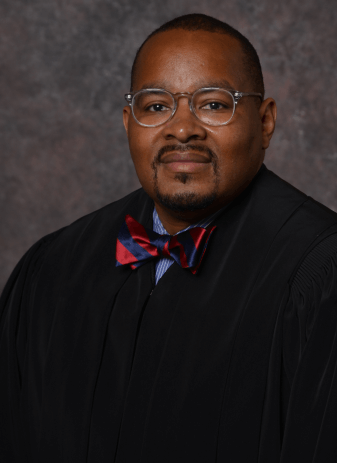
Judge Harris commenced the discussion by stating that the recent deaths of George Floyd, Breonna Taylor and Ahmaud Arbery have created a reckoning in Minnesota and beyond. He asked the participants to share a moment of silence to say the victims’ names and hold them in their thoughts.
Then began a candid conversation with the leaders of the various bar organizations represented. He said, “We brought all of you together to talk about what we’re doing to promote social and racial equity, what are we doing to increase diversity and inclusion in our profession, highlight the work that we’re all doing, and to reflect on our challenges as well as our successes, and create a road map moving forward to deal with this reckoning on racism.”
As participants introduced themselves, they chimed in on the purpose of the discussion and the reasons why their organizations were coming together on the issues.
Aba-Onu stated, “… These conversations are difficult, but they’re needed, and we are perfectly situated to make changes that will be positive not only for our communities, but for the legal community as well.”
Graham said, “With our unique position as affinity bar organization leaders, it is the right time now for us to be not working in silo, but in collaboration with each other to really address some of the systemic anti-black racism that we’re seeing … .”
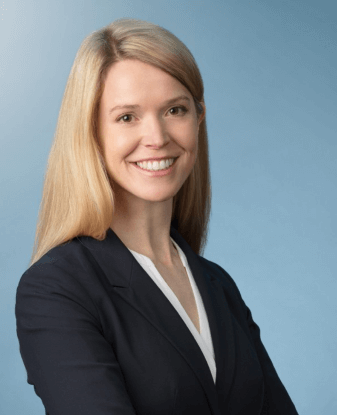
Schleuss added, “Following the tragic death of George Floyd, Minnesota Women Lawyers issued a statement, and we had quoted the words of Sarah Grimké. She was born in 1792. She spoke words that really resonated with our current moment, unfortunately. She wrote, ‘I ask for no favors for my sex. I surrender not to our claim to equality. All I ask of our brethren is that they will take their feet from off of our necks and permit us to stand upright.’ It’s 200 years later, and the metaphor remains tragically literal. From our perspective, we need to do better … to intervene and advocate for change.”
She continued, “To be true to the mission we have set for ourselves to advance the success of women lawyers and strive for a just society, we must walk toward this injustice and be present and active.”
As an affinity organization that is itself diverse in membership, MWL is focusing this year on addressing systemic racism and discrimination in the legal profession, helping its members to discover how to utilize their voices and role as lawyers to change institutions for the better. MWL is “reviewing all committees and affinity groups’ action plans to identify how do we do deeper work, how do we connect and collaborate with others in the affinity bars and then how do we move from … a lot of programming focused on the individual or the personal … and really start shifting to systemic change. How do we change institutions? That is one of our primary goals this year.”
MORE DIVERSITY AT THE BOARD TABLE
Judge Harris observed that while the individuals on the panel reflected great diversity among men and women, they are often the only people of color or minorities represented at their individual board tables. He asked, “What can we do to break that ceiling and get a lot of our tables looking like what we see here tonight, where you have different folks with different ideas and lots of people of color?”

Cage answered, “I think it really begins with empathy, so knowing and having an understanding for the folks in your community. That’s one thing that we’ve tried to build with our initiatives in TCDIP, is connecting lawyers … to community members, folks who have been boots on the ground and folks who have different experiences than most of our attorneys do. … As we connect and have those conversations and build empathy toward each other and toward our community … recognizing that the reality of a lot of folks differs from across the spectrum, only then can you start to appreciate the perspective that diverse folks can bring to the table, and then that makes it more sought after to do so. I think empathy builds that attractiveness to having those critical masses of folks in the room, and we can build empathy by making those connections and networking … .”
Jenrette pointed out that there are many barriers to entry in the legal profession, from law school to the employment realm, where unwritten institutional rules and polices maintain the status quo while disadvantaging those who have been historically marginalized. “We’re essentially trying to get people of color, women, LGBT individuals to fit into a mold that was designed for elite white men — for the success, primarily, of other elite white men.”
She then introduced the fable of the Elephant and the Giraffe. “So when I talk about dismantling systems of oppression, I’m essentially saying, What do we need to do to change the house so that it can fit everyone?”
WHITE LAWYERS AS ALLIES
After the murder of George Floyd, many white lawyers began asking how they can be allies in the fight against systemic racism. Judge Harris asked Schleuss about MWL’s stance on the issue.
She answered, “If you’re sitting in a room, and you do not see people who look differently than you, ask, who else should be part of this conversation? … If we could see our historically white, male leadership take the time to really address these issues and engage in conversations and training — and not just passive training, but experiential learning and training with all of the partners at a firm or within a corporate legal department — I think that would go a long way.”

Graham underscored the importance of allyship. “We talk about associates really needing sponsors to be the ones to talk them up when they’re not around. They’re the ones who are going to really have access to leaders who will be in a position to help that associate … I think about some of this work in the same way. And when I use the term ally, specifically in this context, I am talking about our white allies … I think we should apply the sponsorship method there. Those white people in our organizations, on our boards, they’re the ones who really need to speak up ….”
Graham continued, “It really goes to the idea that being an ally is an action verb. It’s not a noun. Being an ally means you are doing something … . The white people who are in our organizations … really need to not back down and really help bring their fellow white people along with them … It’s holding everybody accountable to the statements that they’ve made to their members and then to the community at large.”
LAWYERS AS AGENTS OF CHANGE

In recent years, the HCBA has begun to take a look at its leadership and change it to reflect the demographics of the legal profession. It has become more engaged in the community, from community early education, to educating lawyers about how to make an impact beyond legal circles.
When asked why it was important for the HCBA to participate in this conversation, Vaughn answered, “In order to bring about meaningful change, it needs to be a community effort. … My challenge to the HCBA and to the affinity bars is to hold us accountable and let us know what we can do to be an ally and continue to be an ally in the fight, because you’ve got a system of oppression that’s been established for 400-plus years, and it isn’t going to be dismantled overnight.” He added that there is something everyone can contribute, whether it is marching, providing money or lobbying efforts. “Figure out what you can do that makes you comfortable, and be involved.”
The discussion turned to the ways in which lawyers are especially equipped to lead societal change and what they can do to address the laws and norms that enable racism.
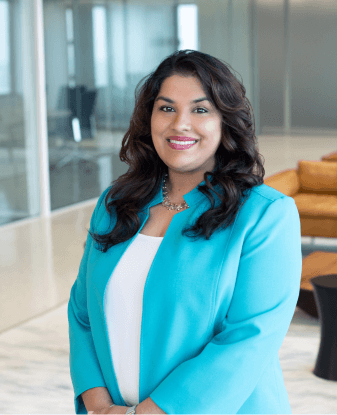
Jenrette urged large law firms with access to wealth, boards and people in leadership to use their influence to debias systems. “There is actually so much we can do. We are in positions of power and privilege. … Part of it is just knowing that there are different ways in which we can contribute. All of us understand and can interpret the law. We have access to making changes within the law, to how we interpret cases, what we bring forth. In terms of what we can specifically do to address anti-racism, I would encourage every organization to join the Law Firm Antiracism Alliance (LFAA). This is just a network of law firms, predominantly, but also some corporate, in-house departments who are joining forces to use their pro bono efforts to specifically address systemic racism. And so what that organization is doing right now is compiling a number of different laws that are racist or keep racism intact, and trying to address them one by one.
“We have the ability to do impact litigation, but we can’t do it in a vacuum. We really need to make sure that we are partnering with different community organizations, grass roots organizations and, similarly, this is what was done during the Civil Rights movement. It was a combination of very thoughtful legal strategy and impact litigation coupled with a grass roots movement that complemented each other.”
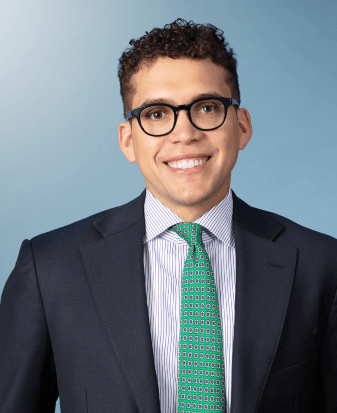
Collado added, “We can begin by addressing this in our offices, by calling it out when we see it. It becomes less scary when we’ve all made a commitment to each other that we’re all in it together, and we’re going to do this.”
Judge Harris asked how lawyers are stepping outside law circles and building trust by interacting with the community.
Graham commented that building trust with the community means showing up and following through on work the legal community has committed to. She also encouraged lawyers to cooperate with community organizations to look at barriers outside the legal profession, like inequities in health care and K-12 education, that negatively impact minority populations from birth. “We’re people first, before we’re lawyers,” she said.
TCDIP is encouraging both corporate and private practice member organizations to bring their resources and work alongside community organizations. The Wanton Injustice Legal Detail (WILD) initiative began as a partnership with community organizations and has evolved to also become a collaboration with affinity bars. Through WILD, TCDIP is fostering education equality and Black wealth and opportunity initiatives, to name a few.
Diverse minority populations exist not only in urban Minnesota, but in rural areas as well. Judge Harris turned to Ebert and the MSBA — Minnesota’s largest and, therefore, most diverse bar association — to capture the outstate perspective on the issues.
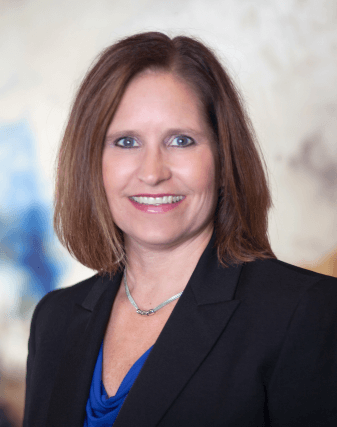
Ebert, “I think it is easy for people from Greater Minnesota to say, ‘That’s a Minneapolis problem,’ and that’s just not the case. … We have pockets of these problems and these issues that are bubbling up and surfacing in all areas of our state. I guess I would say if one thing good has come from COVID, this platform (Zoom) has given us the ability to have those communications in a way we probably never imagined. … As one person, we can’t do very much, but as a collective, we can do so much more. I have that (Helen Keller) phrase in my office on a plaque, and I go back to that often. … We all have great ideas individually, but just imagine how loud our voice is when we’re all talking together.”
When asked what MABL is doing to seize on the moment, Aba-Onu answered, “Our goal is to continue to educate … and also to provide people with the tools so they can help themselves and their self-representation. So one of the big things that we’re doing is that we’re focusing on the legal community on one side and focusing on the black community, or community at large, on the other side.”
As an example, MABL is supporting voter education and registration, and organized an October voter town hall in partnership with the MHBA.
IF NOT NOW, WHEN?
Judge Harris stated that he could not a remember a time in his career when all of the bar organizations have spoken with such power and with one voice. He commended the organizations for issuing public statements in response to the killing of George Floyd and other atrocities, and for actively endorsing the statements of each other. He asked what has moved each one to lend a bolder voice to the issues.
Collado responded, “I think, frankly, it’s our civic duty to make sure that when issues like this occur, we speak with a unified voice when we highlight the ongoing, systematic issues in our society. It’s important that our government represents the community that it serves.”
Schleuss added, “Within our community, we’ve really seen what happens when we don’t have or we don’t use our voices to intervene, and it has tragic consequences. So we, as an organization and as individuals, really want to identify ways in which we can utilize our own voices, amplify the voices of others, and when there are times when you feel like you can’t use your own voice … that you can come to our organizations and find support, and allow us as organizations to help amplify the voices of others for the betterment of our community.”
In closing comments, Jenrette said, “If all of us continue to band together and support each other, and recognize that we have a lot more to gain together than by being divided, we will see significant change, not just within the legal profession, but within our society at large.”
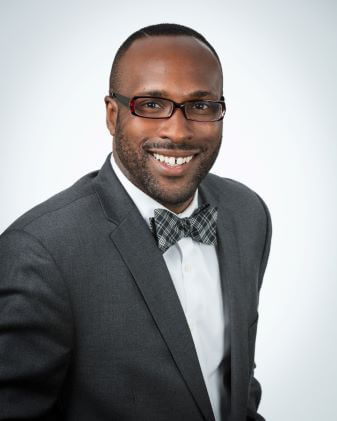
Aba-Onu added, “If not us, who? If not now, when? … I believe with all my heart — if our legal profession, our public servants, were more diverse, there were more women, more people of color in the places in the room where it matters, we would have a more fair … system.”
Judge Harris concluded, “Folks are sick and tired of being sick and tired. They’re fed up with business as usual, and the heartening thing is that it’s not just black and brown folks anymore, it’s our allies, it’s white folks saying, ‘You know what? Enough is enough!’ We are in a moment where now, change is happening, and we are moving forward, but we have to learn from the past. We need to keep the momentum moving forward, and there is going to come a time when that momentum slows. That’s going to be the time where we need to raise our voices, get behind that momentum, and continue to push it so we actually get the change we need. We need to continue to communicate with one another and work towards the goal that we all have, which is equal access to the law for all of us.”
In 2019, the American Association of Physical Anthropologists released the “AAPA Statement on Race & Racism.” The association stated that since humans share 99.9% of their DNA, “race does not provide an accurate representation of human biological variation. It was never accurate in the past, and it remains inaccurate when referencing contemporary human populations. Humans are not divided biologically into distinct continental types or racial genetic clusters. Instead, the Western concept of race must be understood as a classification system that emerged from, and in support of, European colonialism, oppression, and discrimination. It thus does not have its roots in biological reality, but in policies of discrimination.”
If racism is a construct, then we can deconstruct it.
After a Louisville grand jury’s decision not to indict officers for the murder of Breonna Taylor, the content of this discussion has taken on new urgency. We ask all who read these highlights or watch the video to do so with an eye toward remaking America into a house that is a haven for everyone in our beautifully diverse nation.






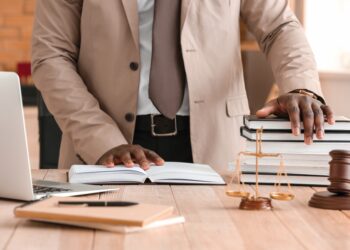

Comments 1
When everyone invited to the discussion has the same perspective and shares identical positions on the issues being addressed it’s not a discussion. It is an echo chamber.